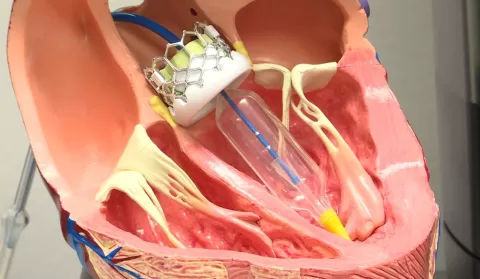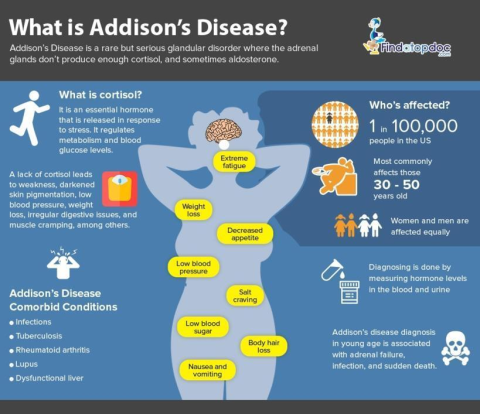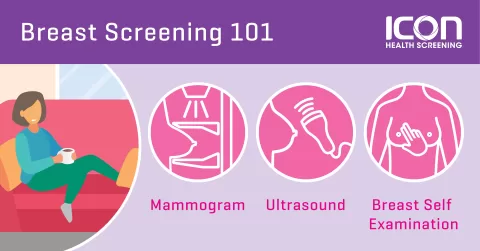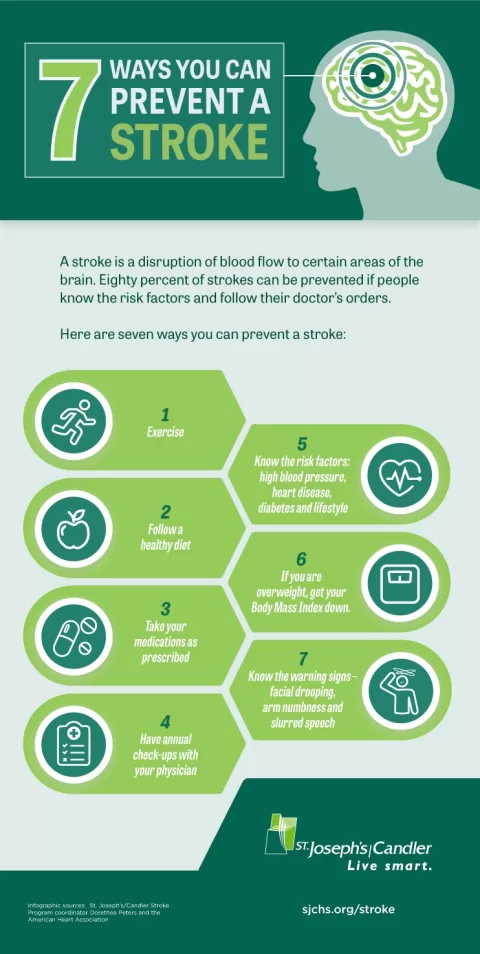Cancer detection technology is revolutionizing the way medical professionals diagnose and treat this formidable disease. With innovations like liquid biopsy and biomarker testing, patients can now get insights into their condition with non-invasive cancer testing methods that significantly reduce discomfort and risk. The rise of advanced cancer diagnosis techniques ensures that doctors can deliver personalized treatment plans tailored to each individual’s unique cancer profile. This not only helps in early detection but also substantially increases the chances of successful treatment outcomes. As researchers continue to push the boundaries of cancer detection, the future looks promising for improved survival rates through these groundbreaking technologies.
The evolution of cancer diagnostic tools is paving the way for earlier intervention and enhanced patient care. Emerging methodologies such as liquid biopsies and sophisticated biomarker analyses are transforming the landscape of cancer screening, allowing for precise identification of malignancies with minimal invasiveness. These sophisticated techniques facilitate the development of individualized treatment strategies, ensuring that patients receive the care best suited to their specific cancer type and stage. As the field of cancer research expands, the adoption of these advanced diagnostic methods promises not only to streamline the detection process but also to improve patient outcomes on a global scale. Integrating innovative technologies into clinical practice increasingly highlights the importance of timely and accurate cancer diagnoses.
Revolutionizing Cancer Detection Technology
The advent of cancer detection technology is set to change the landscape of medical diagnostics, particularly with innovations such as Luminspheres. Developed by the UK startup Chromition, this cutting-edge technology employs fluorescent nanotechnology to detect cancer biomarkers in a non-invasive manner through a simple blood test. This shift towards less painful alternatives to traditional tumor biopsies underscores a growing commitment to improving patient comfort and diagnostic efficiency. By utilizing such advanced cancer diagnosis tools, medical professionals can generate precise insights into a patient’s cancer profile and better tailor treatment strategies.
Furthermore, the potential implications of this technology are profound. As research reveals, the Luminspheres can significantly enhance early detection capabilities, potentially identifying up to 90% of cancers. This level of sophistication not only paves the way for earlier and more accurate diagnoses, but also aligns with the broader movement towards personalized treatment plans. By understanding unique biomarkers present in a patient’s blood, doctors can devise effective treatment methodologies that are specifically catered to individual needs, improving survival rates and patient outcomes.
The Role of Liquid Biopsy in Cancer Diagnosis
Liquid biopsy represents a transformative advancement in cancer diagnosis that provides a less invasive alternative to traditional tissue biopsies. This method involves analyzing blood samples for circulating tumor cells (CTCs) or biomarkers, making it a powerful tool in early cancer detection. Companies like OncoCyte Corporation are leveraging liquid biopsy technology to develop innovative diagnostic solutions specifically for complex cancers such as brain tumors. By identifying genetic mutations through blood tests, medical professionals gain valuable insight that can lead to more accurate diagnoses and quicker access to personalized treatment plans.
The impact of liquid biopsy extends beyond mere detection; it enhances the entire diagnostic paradigm. With fluid samples being analyzed, healthcare providers can monitor the progression of the disease over time and adjust treatment plans accordingly. This adaptability is crucial for managing cancer, particularly with its often rapid progression and variability between patients. Liquid biopsy techniques are instrumental in developing biomarker testing, offering real-time data that can inform the effectiveness of ongoing treatments and signal the need for changes, thus promoting a more patient-centered approach in oncology.
Biomarker Testing: The Future of Personalized Treatment Plans
Biomarker testing is rapidly becoming an essential component of personalized medicine, especially in oncology. By identifying specific molecules related to cancer, such as proteins or genes, clinicians can develop tailored treatment strategies that address the unique characteristics of a patient’s tumor. For instance, the integration of biomarker testing into the treatment planning process can help oncologists select the most effective therapies while minimizing unnecessary side effects. This shift towards individualized care aligns with the trends being observed in advanced cancer diagnosis technology, exemplified by innovations from companies like Amadix.
Moreover, as the field progresses, biomarker testing continues to evolve, expanding beyond initial utility in determining treatment efficacy to encompass predictive and prognostic capabilities. This evolution allows for a more comprehensive understanding of the disease, assisting healthcare providers in making informed decisions that align with each patient’s unique cancer journey. Personalized treatment plans not only improve patient outcomes but also streamline healthcare resources, ensuring that interventions are as impactful and efficient as possible.
Innovative Non-Invasive Cancer Testing Methods
Non-invasive cancer testing methods are paving the way for a new era in cancer diagnostics. With the increasing demand for more comfortable and straightforward testing options, technologies like Luminspheres are leading the charge by simplifying the previously arduous process of cancer detection. The ability to conduct a blood test rather than a painful tumor biopsy presents a game-changing alternative, one that can potentially enhance patient compliance and engagement in their care. The emphasis on these non-invasive techniques is also an acknowledgment of the psychological and physical burdens cancer diagnosis can impose on patients.
In addition, the ongoing development of non-invasive methodologies underscores a broader commitment to advancing healthcare accessibility. With technologies like liquid biopsy and biomarker testing advancing rapidly, the potential for these tests to become routine in clinical settings is becoming increasingly feasible. This momentum not only enhances diagnostic accuracy but also equates to faster treatment initiation, ultimately contributing to improved patient survival rates and quality of life.
Enhancing Diagnostic Services with Technological Advancements
Technological advancements are at the forefront of enhancing cancer diagnostic services. As the global cancer diagnostics market is projected to grow significantly, innovative technologies such as automated scanners and AI-assisted analysis are enabling healthcare providers to process samples rapidly and accurately. Chromition’s Luminspheres model exemplifies this trend, showcasing how continuous automated testing can lead to timely diagnoses, allowing for earlier interventions that are essential in treating cancer effectively.
These advancements are complemented by systematic improvements in healthcare infrastructure, particularly in emerging markets where access to quality diagnostic services is paramount. As healthcare systems integrate more sophisticated tools for cancer detection, the efforts will undoubtedly result in striking reductions in late-stage cancer diagnoses. By fostering a collaborative environment among technology developers, healthcare providers, and research institutions, the landscape of cancer diagnostics will continue to evolve and adapt to meet pressing patient needs.
Market Trends in Cancer Diagnostics
The cancer diagnostics market is experiencing unprecedented growth due to a confluence of factors that include rising cancer prevalence, technological innovations, and an aging population. According to recent market analyses, the sector is anticipated to reach a staggering USD$178.26 billion by 2033, reflecting a compound annual growth rate (CAGR) of 5.91 percent. These growth trajectories underscore the urgency of developing reliable and efficient diagnostic tools—particularly as more individuals seek diagnostic services amidst increasing cancer incidence.
In response to this demand, a range of companies are positioning themselves in the cancer diagnostics market by developing specialized technologies. From liquid biopsy innovations to promising non-invasive testing systems, the focus is on creating efficient and effective methods for early cancer detection. As the industry continues to grow, leveraging advancements in imaging, biomarker testing, and continuous monitoring, the overall landscape of cancer diagnosis is poised for transformative changes that will enhance patient care and outcomes.
The Impact of Aging Population on Cancer Incidence
The aging population plays a vital role in the rising incidence of cancer globally. As life expectancy continues to increase, the number of individuals at risk for developing age-related cancers rises correspondingly. This demographic shift is contributing to an escalating demand for advanced cancer diagnosis and screening techniques, as healthcare providers strive to manage an increasing number of cancer cases effectively. The interplay between aging and cancer is such that healthcare systems must adapt and innovate to address the corresponding needs.
Moreover, this trend signals a critical need for enhanced healthcare infrastructure to accommodate the growing demand for cancer diagnostic services. As the industry evolves, advancements such as those in non-invasive testing and personalized treatment plans are crucial. These innovations not only aim to expedite the diagnostic process but also seek to provide targeted interventions that align with the needs of elderly patients, thereby improving their overall treatment journeys and outcomes.
Emerging Technologies in Cancer Diagnostics
The landscape of cancer diagnostics is undergoing rapid transformation, driven by a surge of emerging technologies that redefine how cancer is detected and monitored. From advancements in AI-powered imaging techniques to the deployment of sophisticated liquid biopsies, innovators are crafting tools that provide remarkable accuracy and timely insights. Companies like Breath Diagnostics are revolutionizing lung cancer detection with their non-invasive breath analysis systems, reflecting a broader trend towards enhancing patient comfort and diagnostic capabilities.
As these technologies develop, the emphasis shifts towards integrating various diagnostic platforms that leverage multiple data types for a holistic view of the disease. By combining advanced cancer diagnosis tools with real-time data analysis and personalized treatment paths, the goal is to create a more comprehensive strategy for cancer management. Continued research and investment in this area promise to yield breakthroughs that will further improve early detection rates and patient outcomes across diverse cancer types.
Collaborative Efforts in Cancer Research and Development
Collaboration is a vital component in the ongoing evolution of cancer research and diagnostic technology. Research institutions, startups, and established healthcare organizations are joining forces to propel innovations that address the urgent needs of cancer diagnosis and treatment. Support from agencies like Innovate UK, which has funded initiatives like the DRACS program, reflects a commitment to developing cutting-edge solutions that translate into real-world applications.
These collaborative efforts aim to harness the collective expertise of various stakeholders to streamline the development process of diagnostic technologies. By sharing resources, knowledge, and insights, participating organizations can reduce time-to-market for breakthrough innovations such as Luminspheres and enhance their potential impact on cancer care. This synergy not only accelerates research but also stimulates the creation of effective, personalized treatment plans based on reliable diagnostic findings, ultimately leading to improved patient outcomes.
Frequently Asked Questions
How does cancer detection technology improve advanced cancer diagnosis?
Cancer detection technology significantly enhances advanced cancer diagnosis through innovative methods like liquid biopsy and biomarker testing. These technologies enable clinicians to identify cancer at an early stage by analyzing blood samples for specific genetic markers. This leads to faster diagnoses and the development of personalized treatment plans tailored to the individual’s specific cancer profile.
What role do liquid biopsies play in cancer detection technology?
Liquid biopsies are a critical component of modern cancer detection technology. They provide a non-invasive method to obtain genetic material from blood samples, allowing for the identification of cancer biomarkers. This approach facilitates early detection of various cancers, resulting in timely and personalized treatment plans that can improve patient outcomes.
What is biomarker testing and how is it used in cancer detection?
Biomarker testing involves analyzing biological samples for specific indicators of cancer, such as proteins or genetic mutations. In the context of cancer detection technology, this testing helps to accurately diagnose the presence of cancer, monitor treatment response, and tailor personalized treatment plans for patients based on their unique cancer profiles.
What innovations in cancer detection technology are on the horizon?
Innovations such as Chromition’s Luminspheres technology and the Digital Rapid Autonomous Cancer Screening (DRACS) program signify the future of cancer detection technology. These advancements aim to utilize non-invasive methods like blood tests and automated scanners to enhance the speed and accuracy of cancer diagnoses, ultimately leading to improved survival rates through earlier intervention.
How does personalized treatment planning benefit from cancer detection technology?
Personalized treatment planning benefits significantly from cancer detection technology as it allows for tailored therapies based on the specific genetic makeup and biomarkers of a patient’s cancer. By employing advanced techniques like liquid biopsy and biomarker testing, healthcare providers can craft individualized treatment strategies that enhance the effectiveness of therapies and improve patient outcomes.
What impact does non-invasive cancer testing have on patient care?
Non-invasive cancer testing, such as liquid biopsies, has a profound impact on patient care by reducing the need for painful and invasive procedures like traditional tumor biopsies. This technology not only improves patient comfort but also facilitates quicker and more accurate cancer diagnoses, thereby enabling timely and personalized treatment plans.
What are the projected benefits of advancements in cancer diagnostics for future patients?
Advancements in cancer diagnostics, particularly through technologies like liquid biopsies and biomarker testing, are projected to greatly benefit future patients by enabling earlier detection of cancer, increasing diagnostic accuracy, and leading to personalized treatment plans. This could enhance survival rates and improve quality of life for patients diagnosed with cancer.
How are companies like Amadix and OncoCyte Corporation contributing to cancer detection technology?
Companies like Amadix and OncoCyte Corporation are pioneering cancer detection technology by focusing on specific types of cancer using innovative methods. Amadix offers a non-invasive blood test for pancreatic cancer, while OncoCyte advances brain cancer detection through liquid biopsy techniques to identify genetic mutations. These efforts represent the evolution of accurate early diagnosis and targeted therapies in cancer treatment.
| Feature | Details |
|---|---|
| Technology Name | Luminspheres |
| Developer | Chromition (UK-based startup) |
| Type of Test | Simple blood test using fluorescent nanotechnology |
| Target (Initial Focus) | Breast cancer |
| Detection Capability | Potentially detects up to 90% of all cancers |
| Processing Speed | Samples processed every 30 minutes |
| Development Support | Backed by CEAMS, funding from Innovate UK |
| Market Growth | Global cancer diagnostics market projected to reach USD$178.26 billion by 2033 |
| Future Readiness | May be ready for clinical trials by 2030 |
| Advancements in Technology | Innovative companies working on early cancer detection solutions |
Summary
Cancer detection technology is witnessing a transformative shift with the introduction of advancements like Luminspheres, which promise to simplify and expedite the diagnostic process. This new approach, rooted in fluorescent nanotechnology, is set to revolutionize how doctors can identify various cancers through non-invasive blood tests. By enabling quicker and more accurate diagnoses, Luminspheres is paving the way for personalized treatment strategies that can enhance patient outcomes significantly. As the global demand for cancer diagnostics escalates, promising technologies coupled with increasing investments and research development hold the key to improving early detection rates and ultimately saving lives.
The content provided on this blog (e.g., symptom descriptions, health tips, or general advice) is for informational purposes only and is not a substitute for professional medical advice, diagnosis, or treatment. Always seek the guidance of your physician or other qualified healthcare provider with any questions you may have regarding a medical condition. Never disregard professional medical advice or delay seeking it because of something you have read on this website. If you believe you may have a medical emergency, call your doctor or emergency services immediately. Reliance on any information provided by this blog is solely at your own risk.








